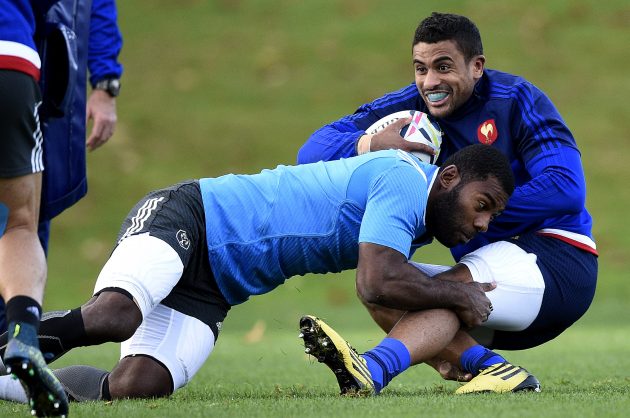Here's how to get your training spot on, by Rugby Coach Weekly editor Dan Cottrell
Training the tackle height might not look so different from how training looks like now, but it will be different in terms of the time spent on tackling and the emphasis on how to tackle.
First, let’s remember that World Rugby has recommended that there are no more than 15 minutes of full-contact training in a week, but with 40 minutes of low-intensity work.
Related: Does Tackle School work?
Full contact is match speed bone-on-bone. You don’t have to use all this time, of course! It very much depends on where a team is in their training and game cycle.
How about the low-intensity contact training? This is where teams use ruck pads, tackle tubes and low-paced, low-impact technical work.
If you already use ruck pads or tackle tubes, this won’t change. I will come onto this in a moment.
What should training for the new tackle height look like
The first focus of training must be giving players as many chances as possible to read the tackle situation to find the right height. This is most effectively done with no equipment, though if you have it, tackle armour is helpful to reduce some of the impact.
In this blog, we are going to focus on tackle-height-specific cues.

School kids in at Jabulani Technical Secondary School practice tackle technique using tackle pads. (AFP via Getty Images)
Tackling realistically
Everything must be done on the feet and with the ball carrier moving. While training at a walking pace is helpful to start the process, ball carriers adjust their height and lean forward differently compared to when they are jogging and then running.
Read more: What is the new tackle height law in community rugby?
Versions of walking rugby are a good starting point, though. The coach calls “tackle” if the tackler makes a shoulder impact below the ball. Now, the ball carrier has to pass.
Breakouts into walking drills can help focus the tackler on footwork, height and correct contact levels. Ideally, the tackler comes in from a slight angle, making it more game-realistic.
That movement makes it more representative because the tackler has to adjust as they move to get close. This is the tricky bit in any tackle because bending to make a tackle needs balance, and that’s more difficult when you are travelling at any sort of pace.
That’s when you dial up the speed on the drills.
Pads and tubes
Ruck pads and tackle tubes will be suitable for technical work too, but they always come with some warning lights. Ruck pads, with their squareness, tend to encourage players to start in front of the pad, or, if not, aim to do so.

England prop Ellis Genge holds a tackle pad during an England team training session. (Getty Images)
Most tackles are at some angle because a ball carrier is generally trying to avoid contact. When using a ruck pad, focus the players on the correct angle to make contact and have the holder with the ruck pad at their hip, not across their body.
Tackle tubes, unlike a player in a game, don’t move. You can drag them to help make it more realistic. They are good for static, low-impact confidence, and if they are the correct size for your players, they improve the grip. By putting tape onto the tube, you can create a height target.
Defence training
As a defensive unit, reduce line speed a bit in training because a defender sprinting up won’t be able to dip or adjust and dip to make a lower tackle. Yes, teams still need to cut down time and space, but it won’t be as aggressive.
Related: How to change your tackle technique for new tackle height laws
That brings us to two-player “wrap” tackles. This skill is still part of the game. The second player must be either be a momentum stopper, coming in at a different angle. Or if they can’t get low enough to grip the ball carrier, they are not a tackler. In other words, they will be grabbing the ball.
Done correctly, this shouldn’t look like a tackle or cause shoulder or head contact. In training, teams must model in slow motion using the activities above before increasing speed.
Indeed, the early game experience shows that few players can target the ball without looking like they are making a high tackle.

France full back Thomas Ramos is tackled during training. (Getty Images)
Attack training
Lower tackles will give some attacking advantages. In training, if you use touch rugby as a tool, encourage the ball carrier to stay on their feet after a touch and reward support players who can take short passes immediately after the touch.
Related: The attacking opportunities provided by the new lower tackle height laws
If you are playing with a touch-tackle limit, if a close support player is touched straight after an immediate pass, it should only count as one touch.
Tactically, players who attack the edges of defenders will give a team more chances to dent a defence. The French traditionally call this the “Duel”, where they want the ball carrier to win the 1 v 1 and then look to pass. Ideally, a pass before contact is better. And with defenders having to dip earlier to make a tackle, there’s more opportunity to fix defenders and pass to players in space.
You should be doing lots of 1 v 1s, rewarding attackers who can beat or half-beat the defender.
Download the digital edition of Rugby World straight to your tablet or subscribe to the print edition to get the magazine delivered to your door.





